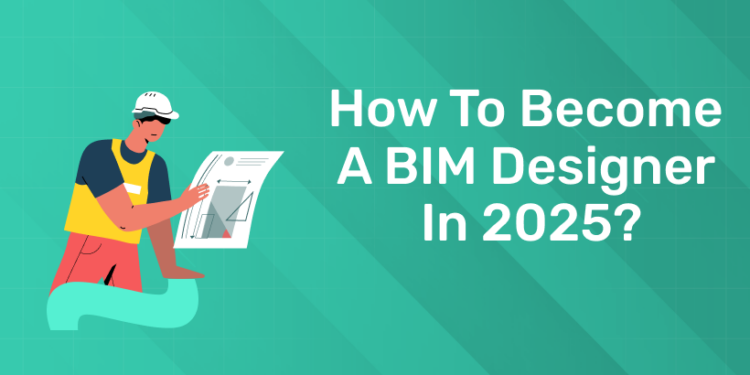Table of Contents
In this blog, we explore the world of Building Information Modeling (BIM) and chart a clear pathway to becoming a skilled BIM Designer. We will discuss the core skills you need, outline a step‑by‑step guide to build your career, review essential software tools, and explore the career growth opportunities available in the field. In the final section, you will learn about a specialized course offered by entri that can help you develop the necessary expertise. Let’s dive in.
BIM Designer: Essential Skills and Qualifications
A successful BIM Designer combines technical know‑how with a strong grasp of the built environment. Below are 7 core skills that will set you apart:
1.1 Technical Proficiency in BIM Software
- Why It Matters: Mastery of industry‑standard software is the backbone of a BIM Designer’s work. Programs like Autodesk Revit, ArchiCAD, and Navisworks allow you to create detailed 3D models and documentation.
- How to Improve: Enroll in targeted training sessions, online courses, or attend workshops that focus on these tools.
1.2 Understanding of Architecture and Construction
- Knowledge Base: Familiarity with construction processes, building codes, and architectural design principles is crucial.
- Development Tip: Reading case studies and practical guides on building design helps connect theory with real‑world applications.
1.3 Keen Attention to Detail
- Precision Counts: In BIM design, even minor errors can lead to significant challenges later in the project.
- Practice: Cultivate habits that reinforce accuracy by reviewing your work and using checklists during project stages.
1.4 Creative Problem‑Solving Abilities
- Innovation: Balancing creativity with technical constraints allows you to propose solutions that meet both design aesthetics and practical requirements.
- Application: Engage in exercises that challenge you to find new approaches to design issues.
1.5 Strong Communication Skills
- Collaboration: BIM Designers work closely with architects, engineers, and construction teams. Clear communication is essential.
- Tip: Regularly practice explaining your design choices to both technical and non‑technical stakeholders.
1.6 Project Management and Time‑Management
- Organization: The ability to manage multiple aspects of a project simultaneously is a key asset.
- Tools: Familiarize yourself with project management software and techniques to keep tasks on track.
1.7 Commitment to Continuous Learning
- Adaptability: The field of BIM is constantly evolving. Staying updated with new technologies and methods is vital.
- Learning Resources: Subscribe to industry newsletters, join professional networks, and attend conferences to remain informed.
BIM Designer: Steps to Become
If you are determined to establish yourself in the field, follow these 8 steps to guide your journey:
2.1 Obtain the Right Education
- Foundational Degree: A bachelor’s degree in architecture, engineering, construction management, or a related field provides a strong starting point.
- Why It Helps: This background gives you an understanding of the core principles that underlie BIM design.
2.2 Develop Your Design Skills
- Hands‑on Practice: Build your skills through practical projects and design studios.
- Tip: Volunteer for projects or internships to gain experience and enhance your portfolio.
2.3 Learn Industry‑Standard BIM Software
- Key Focus: Invest time in mastering popular tools like Autodesk Revit and ArchiCAD.
- How to Proceed: Consider short courses or self‑paced tutorials that offer practical exercises.
2.4 Earn Relevant Certifications
- Boost Your Profile: Certification in BIM tools (for example, Autodesk Certified Professional) validates your skills.
- Note: Such certifications are often favored by employers and can give you a competitive edge.
2.5 Build a Robust Portfolio
- Showcase Your Work: Compile your projects into a portfolio that highlights your best work.
- Elements to Include: Clear visuals, detailed project descriptions, and outcomes of each project.
2.6 Network with Industry Professionals
- Community Building: Join local BIM or architectural associations and participate in events.
- Benefit: Networking can lead to mentorships, internships, or job opportunities.
2.7 Secure an Entry‑Level Position
- First Role: Look for roles such as a junior BIM Designer or BIM Modeler in construction firms, architectural studios, or engineering companies.
- Tip: Use job portals and professional networks to explore openings.
2.8 Embrace Continuous Professional Development
- Lifelong Learning: Attend workshops, webinars, and advanced courses to keep your skills updated.
- Practice: Set aside time each month to learn a new feature or tool related to BIM.
BIM Designer: Tools and Software
The right set of tools can make your design process smoother and more effective. Below is a table summarizing 10 key software solutions that are often used by BIM Designers:
| Software | Key Features | Learning Curve |
|---|---|---|
| Autodesk Revit | 3D modeling, detailed documentation | Moderate |
| Navisworks | Project review, clash detection | Moderate |
| ArchiCAD | Architectural design, team collaboration | Easy |
| Vectorworks | Flexible design tools, versatile modeling | Moderate |
| Bentley Systems | Infrastructure modeling, comprehensive design | Advanced |
| Rhino/Grasshopper | Parametric design and scripting | Advanced |
| SketchUp | Intuitive 3D modeling for initial concepts | Easy |
| Tekla Structures | Structural detailing, reinforced concrete design | Advanced |
| Allplan | Integrated BIM solutions for diverse projects | Moderate |
| Solibri Model Checker | Quality assurance and model analysis | Moderate |
BIM Designer: Career Growth and Opportunities
The BIM field offers various opportunities that can help you build a lasting career. Here are 5 career paths worth considering:
4.1 BIM Modeler
- Role: Focuses on creating 3D models that are accurate and detail‑rich.
- Growth: A strong start for fresh graduates looking to gain hands‑on experience in BIM design.
4.2 BIM Coordinator
- Role: Acts as a bridge between different teams, ensuring that BIM data is integrated seamlessly.
- Skill Set: Requires excellent communication and coordination abilities.
- Opportunities: Often leads to roles in project management as you gain experience.
4.3 BIM Manager
- Role: Oversees the entire BIM process for a project or firm.
- Responsibility: Involves strategic planning, quality control, and team leadership.
- Advancement: This is typically a senior‑level position that commands respect and higher compensation.
4.4 3D Visualization Specialist
- Role: Specializes in creating compelling visuals and walkthroughs from BIM data.
- Importance: Enhances client presentations and project proposals.
- Tools: A deep understanding of rendering and animation tools is essential.
4.5 Technical Consultant in BIM
- Role: Advises firms on BIM implementation and troubleshooting.
- Expertise: A combination of technical knowledge and industry insights is crucial.
- Impact: Helps companies optimize their processes and adopt new BIM strategies.
Additional Opportunities
- Freelancing: Many professionals choose to work independently, offering specialized BIM services.
- Specialized Sectors: Opportunities exist in fields like infrastructure, residential, and commercial construction.
Conclusion
In summary, becoming a BIM Designer involves acquiring a blend of technical proficiency, creative problem‑solving skills, and a solid foundation in architectural and construction principles. The journey begins with proper education and training, continues with hands‑on experience and certifications, and grows through continuous learning and networking. By mastering the tools of the trade—from Autodesk Revit to advanced visualization software—you can position yourself for a range of roles, from BIM Modeler to BIM Manager. Entri is dedicated to nurturing talent through well‑structured, industry‑relevant courses. If you are looking to jumpstart your career in BIM design, consider exploring the specialized course offerings available at entri. Their curriculum is designed to equip you with both foundational knowledge and advanced techniques in BIM. The course covers:
- Practical use of leading BIM software
- In‑depth tutorials on project management and design integration
- Real‑world case studies and hands‑on projects
By enrolling, you can gain the practical skills needed to excel in today’s competitive job market.
Master BIM and Elevate Your Career – Enroll Today!
Stay ahead in the construction and design industry with our comprehensive BIM Course! Learn Building Information Modeling (BIM) from experts, gain hands-on experience with top software, and boost your career prospects. Join now and become a certified BIM professional!
Know MoreFrequently Asked Questions
Which software should I focus on as a beginner?
Starting with Autodesk Revit and ArchiCAD is advisable. These tools are widely used and provide a good foundation. As you advance, you can explore complementary tools like Navisworks, SketchUp, and Rhino/Grasshopper
How can I build a portfolio as a BIM Designer?
Develop a collection of projects that showcase your skills. Include clear visuals, detailed descriptions, and emphasize any real‑world projects or internships. This portfolio will be essential when seeking job opportunities.
How long does it typically take to become proficient in BIM design?
The timeline varies based on your background and dedication. With focused training, you may see significant progress within 1 to 2 years. Continuous learning is key, as the technology and industry practices keep evolving.











